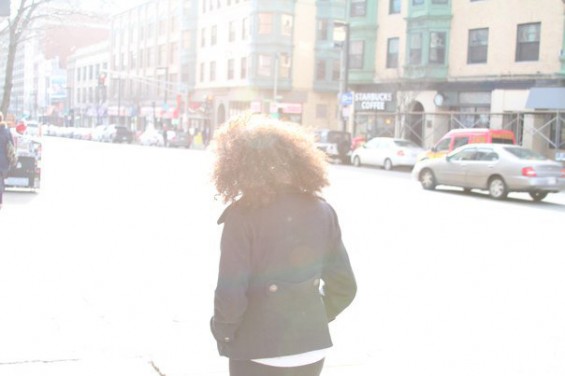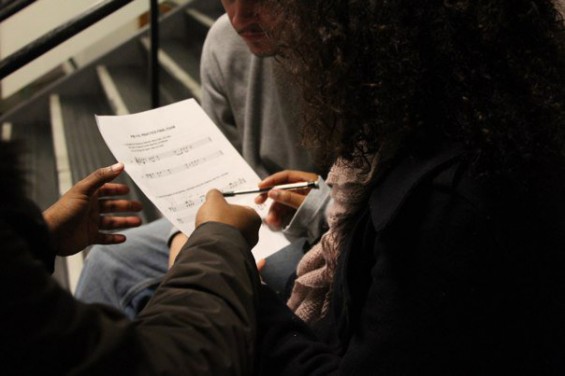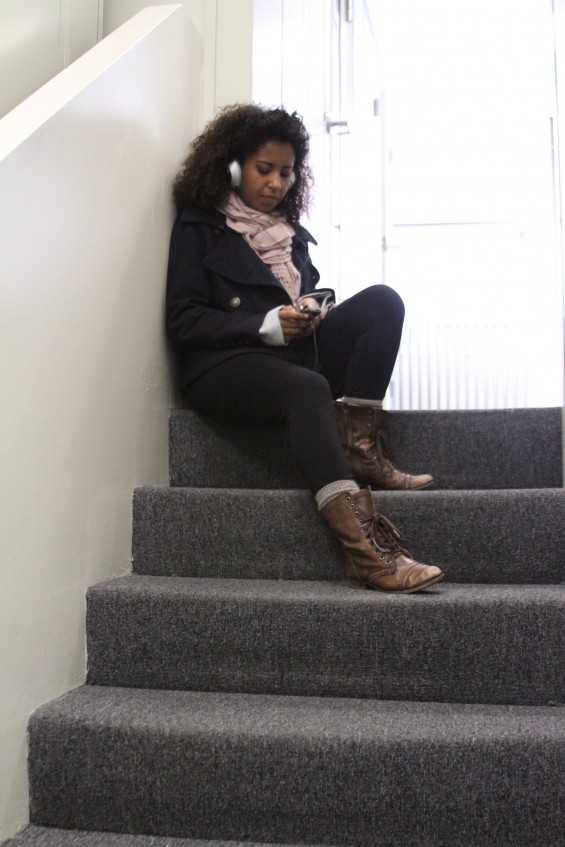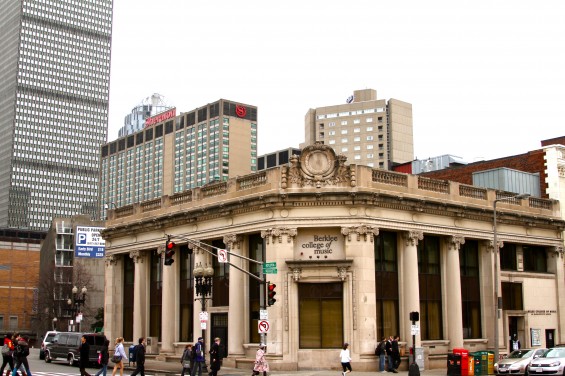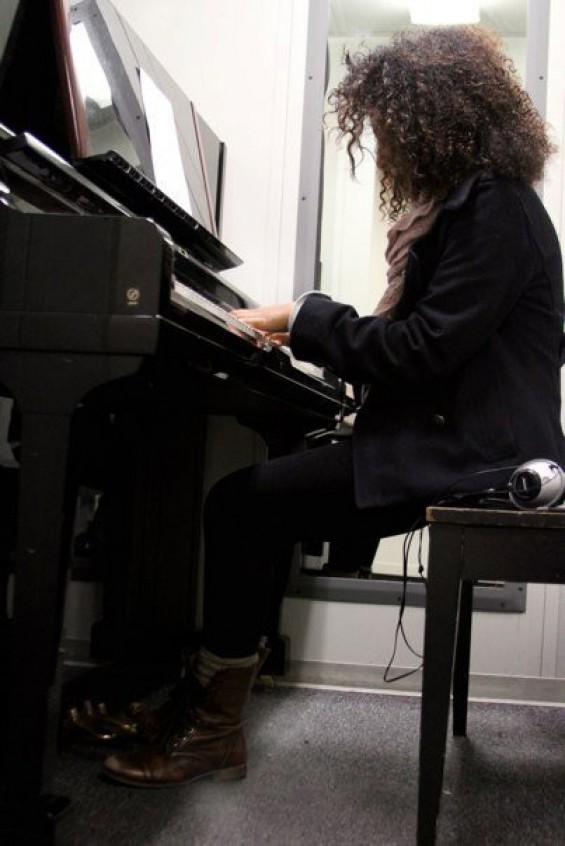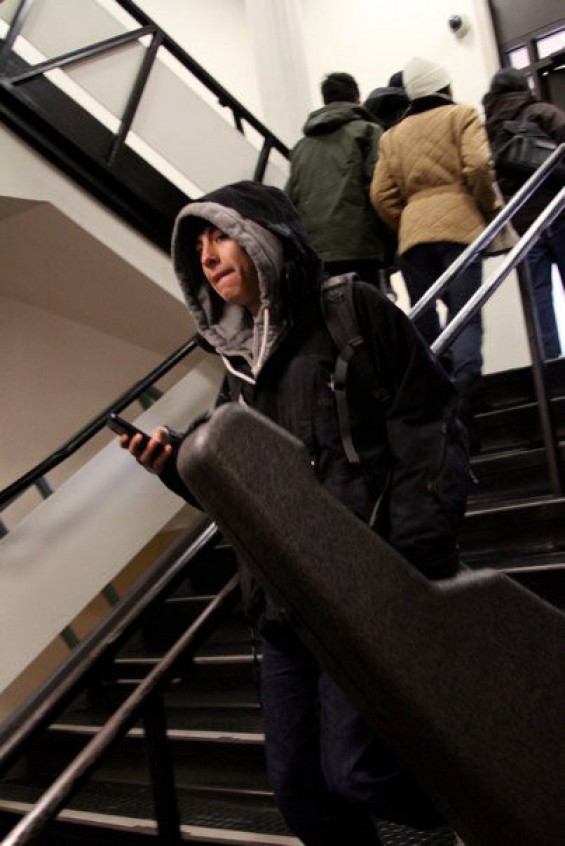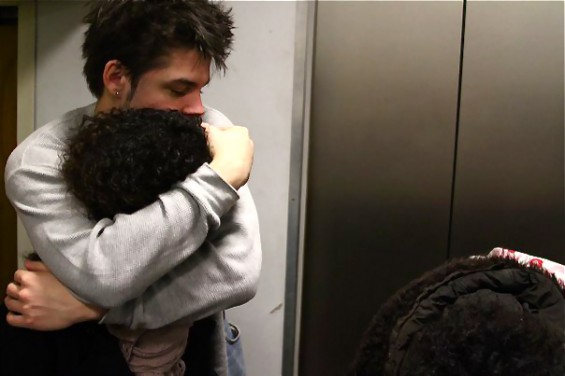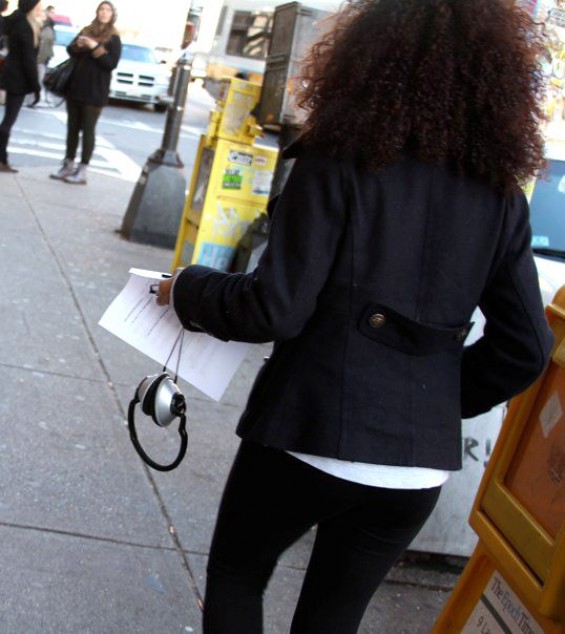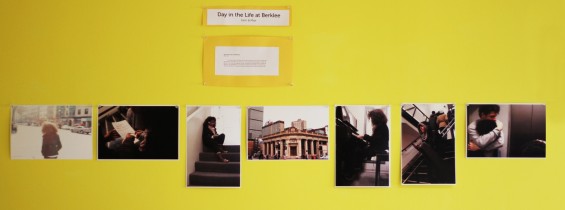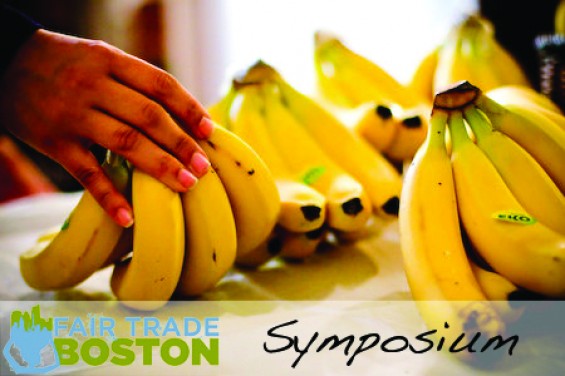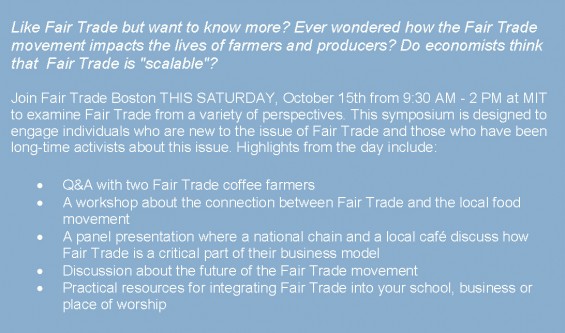by
Alexys Butler 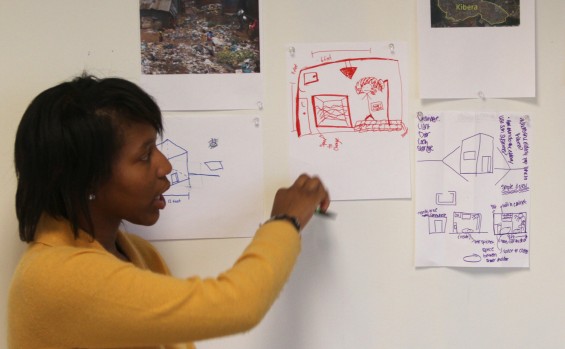
For the past three months Ive been given the chance to go to NuVu everyday. Ive discovered what its like to build, design, create, explore and try something completely out of my comfort zone. One might wonder, what is NuVu and why do you do it? To answer such a question, I believe NuVu is the program meant for those who dont know yet what theyre capable of. NuVu is an environment conducive to creativity, learning and innovation. NuVu gives motivated students the chance to try something new and change the world through a variety of conduits. While in NuVu one is constantly reminded that you dont have to be an MIT PhD candidate or a genius to make a change or just do something. Having recently learned these things, Ive really taken the chance to reflect and think back to who I was and how NuVu has changed me since we began the first week in March. When I first heard of NuVu I knew it was an amazing program. I remember the day that Saeed came to our school and gave a presentation. I thought to myself, NuVu is completely different from the type of school structure that were used to. How could I get used to that? As long as I can remember Ive always loved school, Ive had a thirst for knowledge and a drive for getting As. Ive been so used to the long and demanding institution in which we deem as higher learning. Im used to the never-ending cycle in which teenagers like myself complete every year, reading, writing, math problems, extra-curricular activities, meetings, school trips and everything else from September to June. I have no problem with this cycle, because it has served me well, but there comes a time in every students life where we must transport ourselves outside of the classroom and learn. We must think less in terms of fancy vocabulary words, historic dates and life threatening math problems. To better understand the material that we study day in and day out, sometimes a TED talk or a session with woodwork and skyping with Kibera, Kenya is required. There are times when we really have to step outside of our comfort zone and try something new, not just to better equip ourselves with academic skills, like written communication or critical problem solving but to better understand what is going on in the world around us. NuVu is a world classroom, surrounding us with the global topics that we are not always aware of. NuVu is the environment in which we as students, young people and leaders of tomorrow are asked how can we, with the knowledge and creativity that we hold inside ourselves make a change? How can we do something different? How can we leave a lasting impact on a community? Well, from what Ive recently learned, heres the answer, iteration, iteration, iteration, and lots of starbucks. NuVu is the place where we get our hands dirty, we become involved. All terms have made students become involved but this one specifically makes us become committed. Specifically for the spring term of 2011 we have focused on Design For Development Whether involvement means, research, remaking a solar panel 1 million times or having Saeed throw your very well drawn cardboard island away, you do something! What Ive come to learn now, having experienced NuVu is that we are all connected, we all have something in common, and we all can get by with a little help from our friends. But even these three phrases dont sum up what NuVu is or what my experience here means. As I reflect and think of the four studios that Ive been given the great privilege to be apart, of vivid memories flood my mind. I think of the moment when I, along with my Beaver colleagues stepped into NuVu, and thought to ourselves, what kind of journey are we getting ready to embark upon? All of us experienced a small amount of anxiety, only because this was a new experience for all of us. Yes, because of our other Beaver classmates that had earlier participated in NuVu we did know what to expect but still we were getting ready to try something completely different than what we were used to. Beaver students told us nothing but good things about NuVu. One student in particular said At NuVu, I have connected with myself in a powerful way. I have discovered and learned that anything is possible, while pursuing my passions in music and my new love of media production. Hearing these comments, I knew NuVu would be nothing short of a positive experience. In the first few moments of NuVu, we became hooked to TED talks. TED talks are ideas worth spreading through the internet. These ideas worth spreading soon became the staple of not only the genius camp but of NuVu as a whole.
First Studio: Showers in Kibera 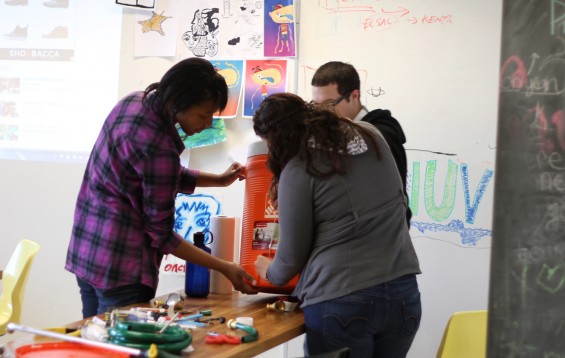
Our coach for this studio was Kenfield Griffith, a PhD candidate in the Design and Computation Program at MIT. Our goal for this studio was to make shower heads for Kibera, Kenya in order for the sanitation to improve. The slums in Kibera are poorly built with 10 to 12 people in each house. The land there, which is not meant to be populated for such a long time is covered with trash and bacteria. During our time with him we got to be a part of his PhD project, Msurvey. Msurvey is an sms text based program that allows people to quickly deploy surveys in areas that have access to cell phones but not necessarily internet. We used this program to get information from the people who live in Kibera about their living conditions and more specifically about existing shower solutions. The rather peculiar thing about existing shower solutions that we discovered from survey results is that only 60-70 people use them. Kenneth Owade, a local from Kenya, told us that people dont use the existing shower rooms because of distance. The slums in Kibera are very crowded so shower houses that are 2 or so miles away are not always used. After reading the results from the surveys we began brainstorming how we would build the shower, how big it would be, and what was it going to look like? First after reading the survey results, we made a list of materials that we would need for building our shower head prototype. As soon as we received our materials from Home Depot we began building. Specifically, in my group we took our Gatorade Thirst Quencher apart. We took the small faucet out of the water jug in order to put in a piece of a water hose and an aerator. We also used an actual water faucet to put into the hole where the water button used to be. After this we had to make some sort of water pressure mechanism. Our brainstorming with David Wang helped us come up with the shower liner water bladder. He pointed out to us that when making a shower head you have to have some type of large object that applies pressure to the water in order for a continuous flow to come out of the shower head. The water bladder took the longest to build. For our water bladder, we concluded that a shower liner would be best. We cut up the shower liner in a way that a satchel could be made out of it. After making a satchel like water bladder, we strung our water bladder through a large paint bucket. The water bladder was capped off with a PVC Endcap. Finally, our prototype was done. Through this studio I came to realize that I can do anything I put my mind into. Im not meant to be an architect or a builder but I can build something. Kenfield taught us the essence of helping others and the great joy one can receive from doing so.Ive come to find that my love for community service and passion for helping others helped me through many challenging studios.
Second Studio: El Salvador with Dr.Ryan Warterna 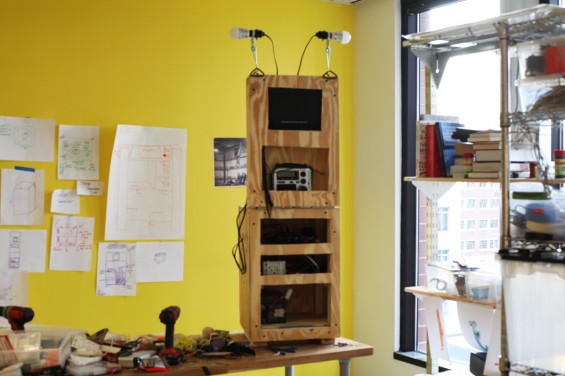
Dr. Ryan Wartena PhD is a chemical engineer and founder of his own energy company Growing Energy Labs Inc (GELI). During his two week studio we were introduced to 20kWatts.com and Invested Development. The task we were asked to complete during his Energy studio was building an all-in-one energy computer system. We later named our system iEnergy. This studio in particular was very challenging, not only did we review freshman physics, but we had to learn a few new energy conversions. These two things were the least of our challenges. During our studio with Dr. Ryan Wartena we endured many conflicts, often times we became frustrated with the long lists we had to make, the energy conversions we had to complete and the many times we had to rebuild our iEnergy system. Through all of these challenges we were often reminded that we were doing this for a good cause. We were helping those less fortunate in Cerro Segovia,El Salvador. In the beginning of our studio we saw a very short documentary of the work that the people from 20kwatts.com had previously done with the people of El Salvador. We watched this documentary on more than one occasion, in order to make sure our iEnergy System would be the most ideal for them. Soon enough we began our design. Our design process was rather long. In the beginning we knew we were going to make some type of energy system for El Salvador but we werent specifically sure of the format. We did a decent amount of research, discovering which electrical appliances the people in Cerro Segovia El Salvador needed. After discovering that they needed things such as tvs,lights, AC outlets, coffee grinders and other things we decided that we would put all those things together in the form of a box. We finally got the measurements and began building. As usual, while building one notices that not all measurements are realistic, some parts of our box had to change. In the end we made a 3ft box that had a flip top. Inside of our box were two lightbulbs, cellphone chargers, AC outlets, a television, a radio, and DC battery.All of these electronic appliances were connected through wires coming out of the back of our box. Most of the appliances such as the radio, television and cellphone charger were connected to a solar panel and a battery. In the end we came up with the most ideal and charitable energy system those in El Salvador. In doing all of this, I believe we all came to realize that despite the challenges and frustration that we were forced to deal with, we all were doing something different and beautiful. We were helping people just like us. With our innovative ideas and hard work we not only became aware of a global issue, but we were doing something about it. Often times in our world today, we hear about tragedies that affect various communities. Sometimes we educate others and have dialogues surrounding these issues but we never actually do something. As it is said, talk is cheap, and sure enough it is, but when one begins to put their money where their mouth is, things begin to change. Once again, as it is often said, you only get out, what you put in. When you put in positivity, you get positivity. When you work hard, your hard work pays off. Luckily, in our case, because of our hard work and determination people in El Salvador are in the process of receiving electricity and further supporting their economies.
Third Studio: A Sustainable Island 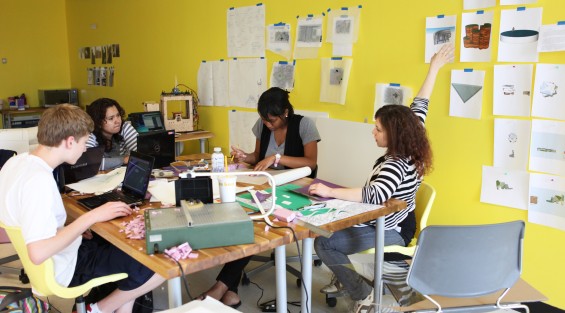
Alyin B. Yildirim is a graduate student at Harvard. Among her many degrees and years of experience in architecture, she often goes back to her love for immigration and migration history. She often tries to answer the question why do people migrate? When she came to NuVu to teach a studio she made us try to answer the same question. She took us into her world, allowing us to focus on utopian societies in the media and what sustainability means. Our time with Aylin consisted of movie trailer watching, designing, drawing and thinking about the future. For me, the most important part of this studio, was thinking about the elements of home. How do we know when were home? What makes us feel at home? Answering these essential questions gave us the power to create an island that would make others feel at home. As a result of our answers to these questions we decided that our island needed to have a central shopping area, rooftop gardens (sustainability) and an all in one area that supplies every one's needs. Most importantly, our island had to be completely eco-friendly. Often times there were many conversations about how the island would be supplied with energy and how people would be able to get around. The answers to those two questions are the reasons as to why there are wind-farms on our islands along with mopeds. Transportation was a very important detail for our island. The group that I was apart of worked very hard to make sure that our transportation system was idealistic and natural between Carson Beach and our island HarborSide. In the end both groups in our Sustainable Island studio, presented an island design supported by 3D models. Overall this island spoke to me on many different levels. First, I was reminded of my heritage and others heritage. I was reminded as to why America is the country it is today. I was reminded of the power of history and the power of the ability to do something for one self.
Fourth Studio: Blueprint with Raghava 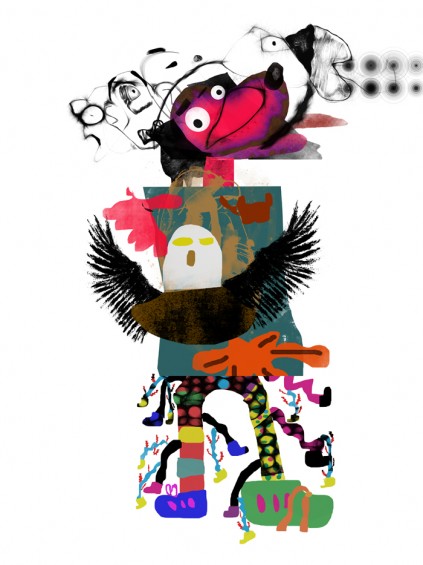
Raghava KK, is one of the best artists one may ever meet. Having him teach our studio was truly an honor. Our studio with Raghava focused on art and the power and responsibility it has. Raghava gave us a crash course on cartooning and how easy it is. With Raghava we went from cartooning to digital painting in photoshop. We used photoshop so that we could create exquisite corpses. Exquisite corpses are very creative and crazy looking bodies. In the beginning of our exquisite corpse process, Raghava asked us to come up with ten ways to do something. For example, some people came up with ten ways to be lazy,cool or 10 ways to fake yourself. After people came up with ten ways to do these different things, we broke up into groups of three and were assigned to either a head, body or legs for these corpses. Assignments were given and then we began. In the end,10 exquisite corpses were created. Aside from making our amazing exquisite corpses we also produced, watercolor paintings, harmony sketches and other photoshop masterpieces. Raghava made us all realize something special through art. He made me realize that I can draw. Even though Im not the best artist, Im still an artist because I have the power to create. During Raghavas studio we worked a lot with painting. We did actual watercolor painting and digital painting in photoshop. For me, both things were very challenging because Ive never been the most creative person, but still because of Raghava and the NuVu environment I was able to paint. I made something out of nothing. In essence, making something out of nothing was the point of Raghavas studio. He awakened our creativity, while also educating us on the world. Often in our studio with Raghava we watched many TED talks. Not only were these TED talks for entertainment but for the purpose of learning. There was a lesson in every TED talk we watched. The TED talk that spoke to me the most was the one we watched by Dr. Jill Bolte Taylor. Dr. Taylor is a neurosurgeon in Boston, Massachusetts the mecca of medicine. In her TED talk, she shared her story. She spoke about the experience she encountered while suffering a stroke. While telling her story at the TED conference, she spoke most about her many reflections after having had her stroke. She spoke ardently about his Nirvana she experienced while coming face to face with death. While talking about her Near Death Nirvana experience, she repeatedly stated that if everyone thought like, with the more creative side of their brain, which is the right side, everything would be so different. If we as people through more so in terms of creativity and happiness our world would change astronomically. If we acted more upon our creative senses than our logical and academic senses, our environments would be so much better. In essence, Dr. Taylor wanted us to know that creativity should be harnessed and celebrated often in all things not just the things that call for creativity. As Dr. Jill Bolte Taylor believes that creativity should be harnessed in everything, NuVu shares the same belief. Through creativity and innovation all things are possible. Conclusively, NuVu has helped me change. NuVu has opened my eyes and mind to creativity. Ive learned to harness and nurture my creativity more often. Ive realized that stepping out of my comfort zone is often more rewarding than not. NuVu has been such a great environment. Ive seen and learned so many different things. Innovation is a beautiful thing and it has the power to save the world. I am so glad I was able to be a part of all the projects that have gone on to help Kibera, Kenya and Cerro Segovia, El Salvador.
